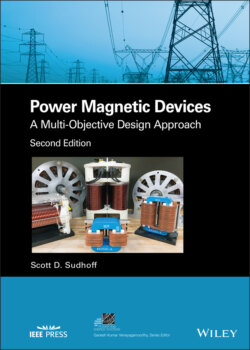Читать книгу Power Magnetic Devices - Scott D. Sudhoff - Страница 26
Mutation
ОглавлениеIn the process of the duplication of chromosomes to form gametes, occasionally errors in DNA duplication occur, which are referred to as mutations. Normally, particularly in mature species, these mutations have either little effect or a harmful effect. However, occasionally mutations yield beneficial traits. This is particularly true in the early evolution of a species. Mutation in GAs helps to explore the parameter space; in doing so, many mutations are harmful, but occasionally mutations occur which are very beneficial.
Referring to the pseudo‐code in Table 1.2, genes are selected at random for mutation. Many chromosomes will have no mutations, and others may have several. There are several approaches that can be applied to mutate a gene. One approach, referred to as total mutation, is to simply reinitialize the mutated gene at random in the interval [0,1]. Figure 1.12 illustrates the total mutation operator applied to the third gene of a chromosome (which could be either a1 or a2 with respect to Table 1.2).
A second method is partial absolute mutation. In this method, if the jth gene is selected for mutation, the mutated value is given by
(1.6-11)
where N(·) denotes a zero‐mean, unity variance Gaussian random number generator and σ is a desired standard deviation. A related method is partial relative mutation wherein the modified gene value may be expressed as
(1.6-12)
In partial absolute mutation, the size of the mutation is independent of the value of the gene; in relative mutation, the size of the perturbation tends to increase with the magnitude of the coded gene value. In both of these methods, gene repair is necessary because either method could result in a gene value outside of [0,1].
There are also vector‐based mutation operators. In absolute vector mutation, we have
(1.6-13)
where V(·) denotes a unit vector with the same dimensionality as the chromosome in a random direction. For relative vector mutation, we have
(1.6-14)
where Ng is the number of genes in the chromosome in question. Both of these operators require gene repair.
Figure 1.12 Total mutation.
A final mutation operator we will consider is integer mutation. Recall that in integer coding, we are representing integers as real numbers and mapping them to a discrete set of values within [0,1]. In the case of integer‐coded genes, the mutation operators just described are not appropriate. Thus, it is convenient to use a total mutation of these genes with the result discretized to the allowed values.
The mutation operators just described all have uniform and nonuniform versions. In uniform versions, the parameters of the algorithms (the mutation rates, and standard deviations of mutation amount) are constant with respect to generation number. In nonuniform mutation, these rates vary. Normally, high mutation rates and large standard deviations are used at the beginning of evolution while smaller rates and standard deviations are used toward the end of the study when the population is mature from an evolutionary point of view.
